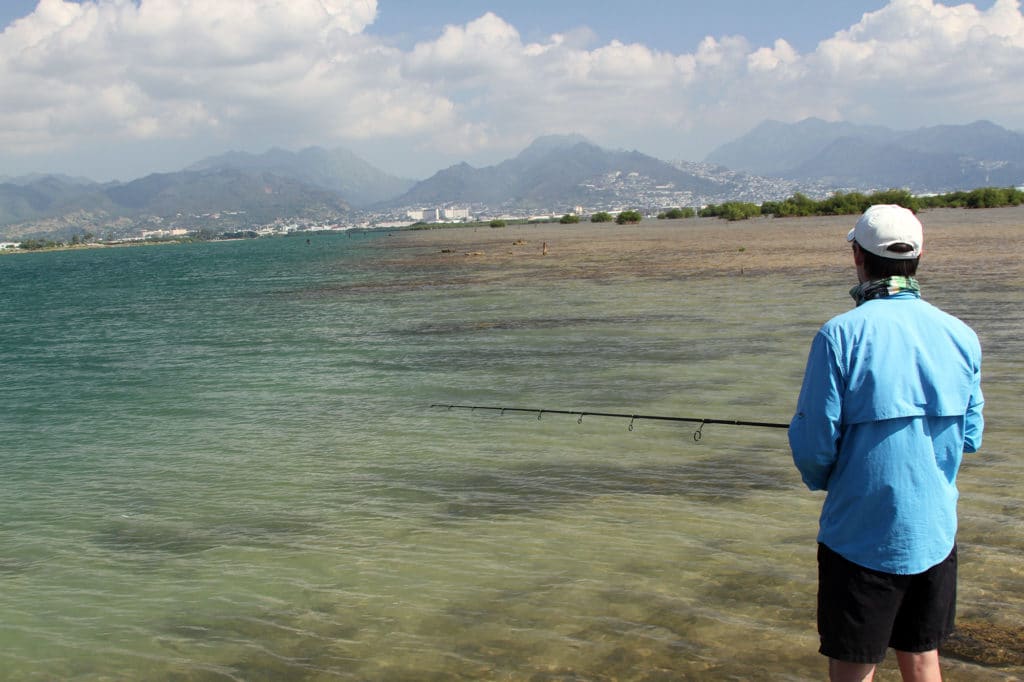
Our first look at the coral and lava rock flats dotted with mangroves revealed tails waving above the surface, a scene we would witness repeatedly. Maybe the excitement — a first-timer’s jitters — made my nervous hands shake. My first cast arced too high, bringing the bonefish jig splashing down behind and to the left of the targeted tail. The fish, fast and big, disappeared in a dazzle of green and silver.
I reeled in, scanned the surface and soon saw two more bones, their vibrant green backs on the surface, their silver tails waving as they worked along the outer edge of the flat. Again I cast, with more control this time, trying to lead the incoming fish. The jig splashed down a foot ahead of them. But just as before, they blew up, and in a blur, they were gone.
Despite years of bonefishing experience between us, my buddies and I hadn’t figured we’d find bonefish in Hawaii so quickly, let alone this many big tailers. Within our first 10 minutes of wading Hawaiian flats, we saw scores of big bones and scared every one of them when we cast. These fish sure put us to the test.
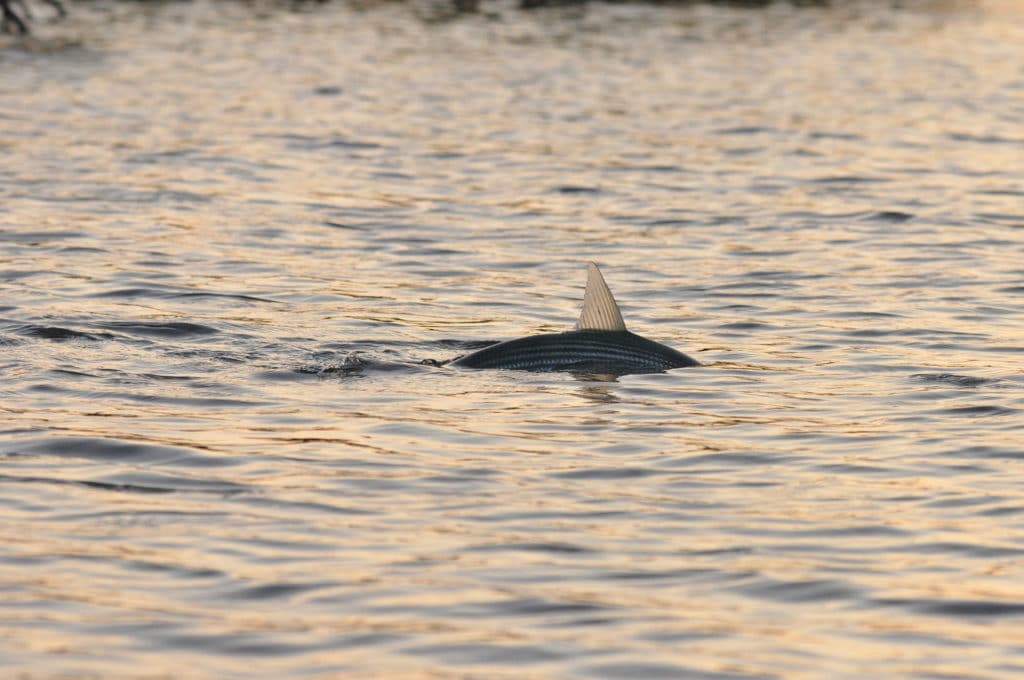
Bonefishing in Hawaii
We had heard rumors about Hawaiian bonefish for several years, gossip akin to the promise of lost cities of gold. So my fishing pals and I made the 5,000-mile trek in search of the big bones of Oahu.
What we found was a healthy fishery populated by sizable specimens. We fished without guides, simply gathering local information and learning along the way, from the Waikiki beaches to the south to the eastern shores of the island.
Oahu bonefish — called o’io (oh-EE-oh) in Hawaiian — are hefty, strong fish, consistently in the 6-pound-plus range, with 10-pounders a regular occurrence and scale tippers of 16 pounds possible. These aren’t Hawaiian tourist-board exaggerations; these fish are there. But they aren’t pushovers.
Bonefish are Easy to Scare Off
By our second day on the flats, with one fish hooked and none landed, we shifted tactics often, trying everything in our repertoire. We changed from artificials to bait, rigging chunks of the Samoan crabs and mud crabs we found under rocks along the flats on 1/0 circle hooks. By then I had calmed a bit and regained control of my casting.
At low tide, I spotted a school of fish moving through a sandy cut, swimming toward me. I cast the crab 15 yards ahead of the fish and let it settle into the cut. As the fish neared the bait, I lifted my rod tip just enough to twitch the bait and draw a fish’s attention. They exploded.
I may as well have chucked a flaming minivan into the water given the communal bonefish response.
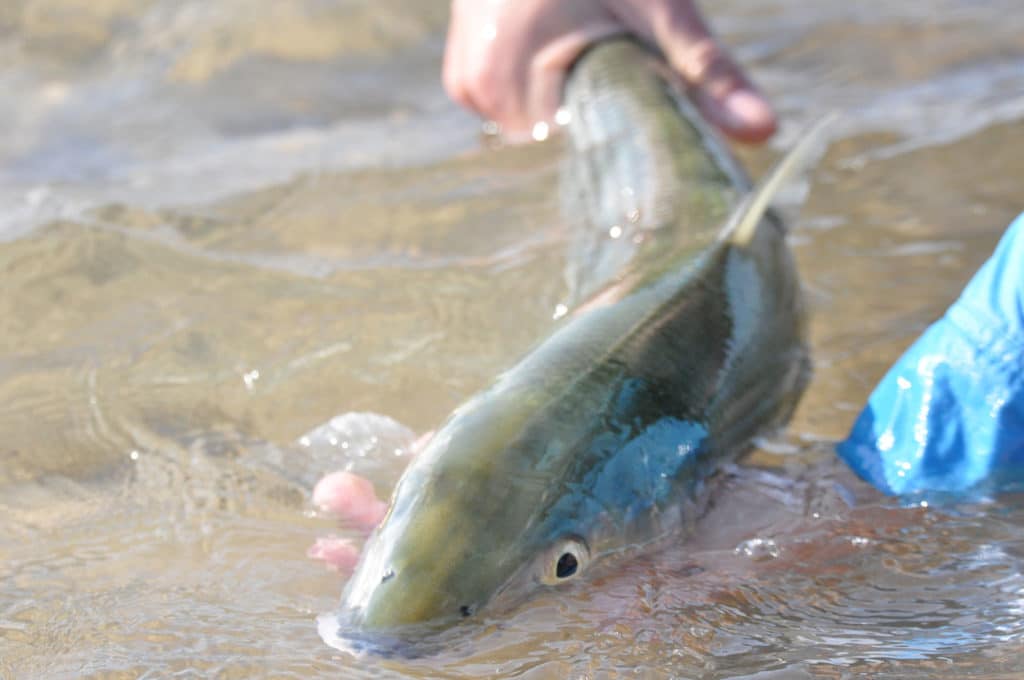
With patience, by the end of the second day, we began to connect. My buddy, affectionately known as Dr. Bonefish among his Lower Keys comrades, landed the first, standing in ankle-deep water and casting Samoan crab and mud-crab pieces to the edge of the flat. Two fish moving along the cut flashed their tails. We both cast 15 yards ahead of them, squatted and waited quietly. They passed my bait without a glance, then meandered in the direction of Dr. B’s bait, and the fish farthest from us turned and took the crab. The fish ran hard multiple times, testing drag and tackle before coming to net.
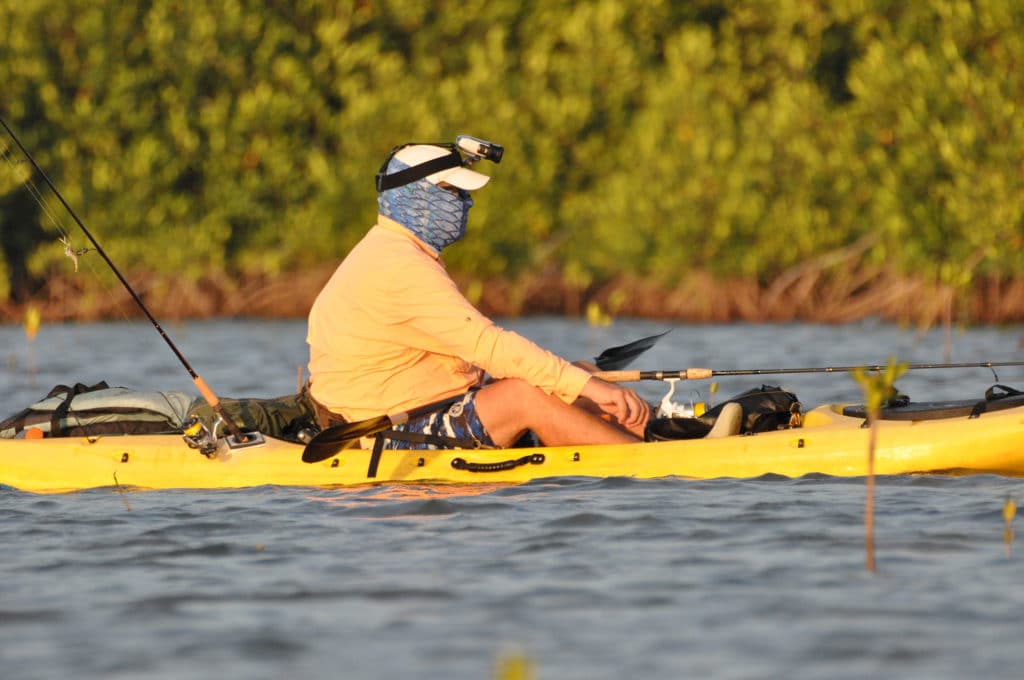
How to Cast to Bonefish
Oahu bones’ excitable temperament calls for careful casting. We found lighter, softer lures could be better placed in proximity to tailing fish without spooking them. Heavier lures — such as traditional Florida Keys bonefish jigs — made too much noise when they hit the water. Similarly, smaller natural baits created less commotion when cast ahead of both singles and schools moving onto the flats.
In addition to using smaller lures and baits to reduce splashing, Oahu bones demand placing the baits well ahead of the fish. Casting directly at tailing or cruising bones results in fleeing fish, but a soft cast ahead of them gives the bait time to settle into the water, appearing as a natural prey in the bonefish’s path.
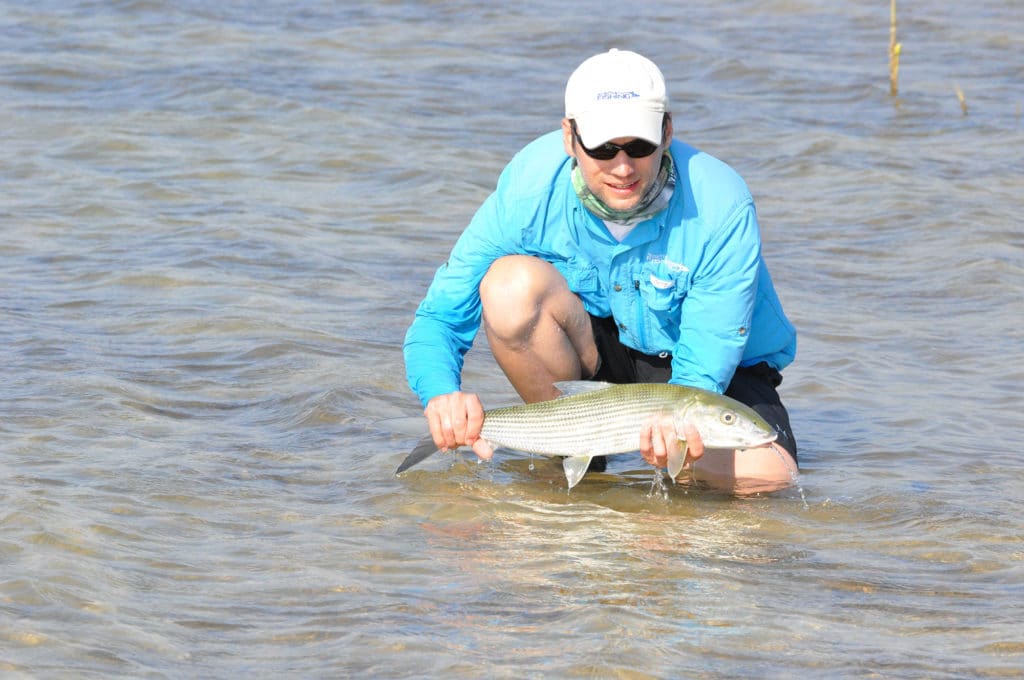
Simple Fishing Rigs for Bonefish
Rig simply. We settled on simple connections from braid to leader to hook, with a few added split shots to assist in casting. Split shots also help the bait sink to the bottom of the deeper cuts where bonefish gather at low tide. In addition, this minimalist approach allows baits to move naturally with the current. As we thinned out our tackle, removing swivels, weights and long leaders, our hookups increased.
The Oahu flats are not vast; they are compact and rich. Many extend from crowded resort or urban areas. They are remote because Hawaii is remote, but they are easy to get to from within Hawaiian environs. And they definitely hold big bones, making Oahu a world-class bonefish destination.
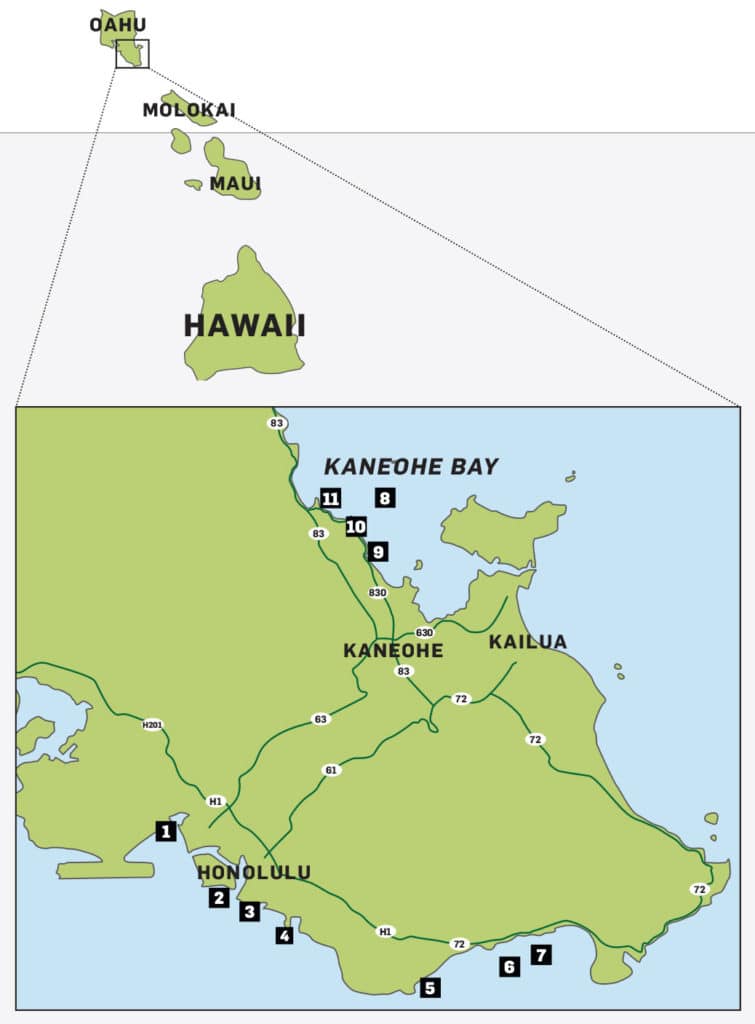
Oahu Bonefish Fishing Spots
- Ke’ehi Lagoon/Mokuoeo Island: Best accessed by kayak from Ke’ehi Lagoon Beach Park, the flats and mangroves are some of the island’s most productive, and they hold big bones.
- Sand Island State Recreational Area: This has easy beach access to flats just off Honolulu Channel. Look for bones along the channel edge, especially at lower tide stages.
- Ala Moana Beach Park: White-sand beach within walking distance of the Waikiki resort areas. The area has several flats and a small reef just off the beach where bonefish travel back and forth between flats and the reef.
- Waikiki: This is a primary tourist destination on Oahu. Productive flats are steps away from hotels, like the Hilton Waikiki Village, and Fort DeRussy Beach Park. The fish here are often especially skittish, and these deeper flats make sight-casting more challenging. This area is exposed to open water, so high winds and big waves can make things difficult at times.
- Waialae Beach Park: Opens to a shallow flat with several sandy cuts. Go from flat to flat, looking for fish in the sand channels.
- Wailupe Beach Park: Two miles east of Waialae Beach Park is Wailupe Beach Park, which opens to a fertile flat to the south. Look for bonefish in the sandier channels and cuts within the coral flats. Hard coral bottom here takes a toll on leaders and lines.
- Kawaikui Beach Park: A mile east of Wailupe with flats similar to Wailupe.
- Kaneohe Bay: Some of the island’s best bonefishing. The massive flat of Kaneohe Bay, best accessed by boat or kayak from the Kamehameha Highway, offers some of the most productive flats. Look for big fish in channels and cuts among the coral and grass flats.
- He’eia State Park: Easy kayak launch.
- He’eia Kea Boat Harbor: Another good kayak launch. Be sure to try the fish tacos at He’eia Pier General Store and Deli.
- Laenani Neighborhood Park: Easy kayak launch.









